From the future of the hobby to flashback footnote
Back in 1991, the hobby was starting to respond to Upper Deck’s new quality standard and the growing demand for premium cards. Topps set a new standard with 1991 Stadium Club, one-upping Upper Deck with full-bleed photography and a new take on stats on the back. While 1991 Topps was still mired in the past, Stadium Club was the future. Two years later though, Upper Deck brought full-bleed photography to its base product while, along with Topps Finest and Fleer Flair, its new SP product helped to define the super premium category. Stadium Club meanwhile had grown stale and gimmicky, sticking around for another decade despite having been made redundant by an era of premium escalation that it had helped to usher in.
The Stadium Club brand would appear only briefly over the next decade with baseball, basketball, and football products in 2008 and a Triumvirate insert set in 2013 Archives. In 2014 though, Topps resurrected the brand that had been irrelevant for 20 years and tried to breathe new life into it. They just didn’t try very hard.
Card Design
While Topps may have been going for something new, they instead brought back a trimmed-down version of 2000 Upper Deck. Now, 2000 Upper Deck is a particular favorite of mine, but that’s not going to earn 2014 Stadium Club any points in my book. On the back, it’s a jumbled mess with abbreviated stats and a short player blurb under a big player info section that takes up too much space and has a weird slant to it that doesn’t make much sense. So many angles, none of them working together to form anything in particular. As for the stats, they’re basically a joke; base Topps does a better job. This entire design is mired in the past and not in a good way.
Mets Selection
Seven cards out of a 200-card set is about average and so is the player selection. You have the two default rookies, two hot young pitchers, two franchise players, and Curtis Granderson. This is Topps playing it safe. Some riskier choices (Rafael Montero, Juan Lagares, Daniel Murphy, Lucas Duda, etc.) would have added some welcome variety. Jacob deGrom would have been outstanding. Instead, it’s the usual bunch with some rather uninspired photographs. Every single pitcher is shown in pretty much the same pose, all tightly-cropped to the point of eliminating any photographic value. No risks were taken in the development of these cards.
Parallels
No ’90s throwback would be complete without simple parallels. The common parallels in 2014 Stadium Club are rainbow foil, gold foil, and electric foil, all three of which replace the regular silver foil with a slightly different foil and a different nameplate background. Foilboard (numbered to 25) and Member’s Only round out the rarer parallels.
Inserts
David Wright, David Wright, David Wright. That’s all the Mets we get in the Beam Team, Field Access, and Triumvirate inserts. All of them have parallels, but, like the base set parallels, none of them really stand out from the base versions. Field Access appears to be a new insert set, but Beam Team is a ’90s basketball insert that was adopted by the baseball version in the 2000s and Triumvirate is from the late ’90s.
Autographs
I’ll give Topps some credit here, they don’t go with the usual Wilmer Flores and Travis d’Arnaud pairing. Rafael Montero was absent from the base set but has his first RC autograph in 2014 Stadium Club. Zack Wheeler has had a lot of autographs lately, but he’s still a bigger name than most common Mets signers. Autographs are all on-card with (for Wheeler at least) the same photograph as the base card. The autographs are really the only selling point of this product, but most of them don’t sell for much (the Montero can be yours now for $2.85 plus shipping on COMC). Parallels include rainbow foil (numbered to 50), gold foil (numbered to 25), and electric foil (numbered to 1).
The Verdict
The Stadium Club name alone just can’t carry an entire product. Without a standout card design, eye-catching photographs, or an imaginative player lineup, Stadium Club relies too heavily on the inserts and parallels to provide value and they just don’t deliver. Even with the product positioned well to catch late-appearing rookies, Topps only manages to get Montero in with autographs and no base cards and leaves deGrom for Topps Update. I could see using Stadium Club Autographs as an insert in another premium product, but the rest is easily skippable, especially with a release date right in the middle of one of the busiest times of the year for new baseball card products. 2014 Stadium Club is a generic and uninspired mess that gives no justification for its existence beyond a name that Topps has already worn out.
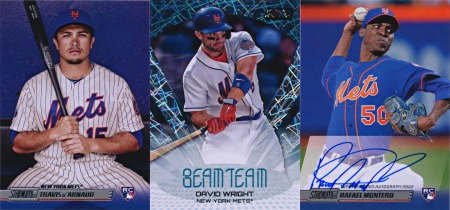
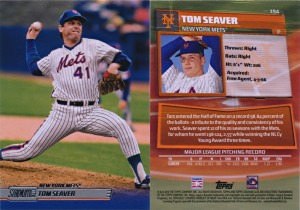
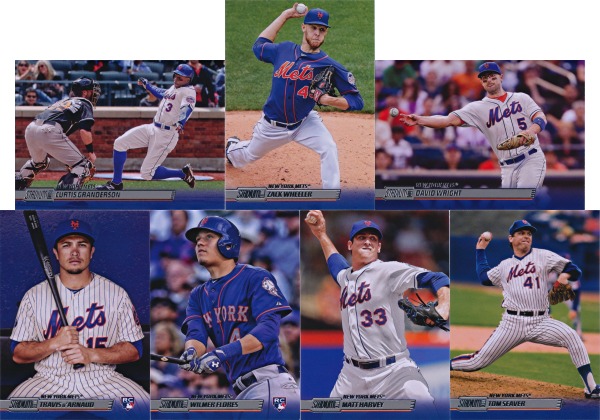
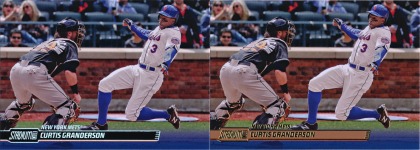
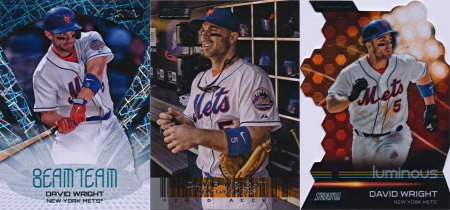

GREAT review! Just wanted to say how much I love your site, and what a great job you do. I’m a voracious Mets card collector and I’m constantly using your reference work. Thanks, much love from Brooklyn, NY
Peter